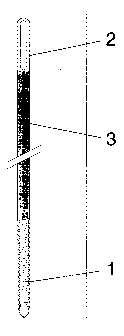Une partie des informations de ce site Web a été fournie par des sources externes. Le gouvernement du Canada n'assume aucune responsabilité concernant la précision, l'actualité ou la fiabilité des informations fournies par les sources externes. Les utilisateurs qui désirent employer cette information devraient consulter directement la source des informations. Le contenu fourni par les sources externes n'est pas assujetti aux exigences sur les langues officielles, la protection des renseignements personnels et l'accessibilité.
L'apparition de différences dans le texte et l'image des Revendications et de l'Abrégé dépend du moment auquel le document est publié. Les textes des Revendications et de l'Abrégé sont affichés :
| (12) Brevet: | (11) CA 2360904 |
|---|---|
| (54) Titre français: | VIS A OS |
| (54) Titre anglais: | BONE SCREW |
| Statut: | Périmé et au-delà du délai pour l’annulation |
| (51) Classification internationale des brevets (CIB): |
|
|---|---|
| (72) Inventeurs : |
|
| (73) Titulaires : |
|
| (71) Demandeurs : |
|
| (74) Agent: | OSLER, HOSKIN & HARCOURT LLP |
| (74) Co-agent: | |
| (45) Délivré: | 2007-05-22 |
| (86) Date de dépôt PCT: | 1999-02-04 |
| (87) Mise à la disponibilité du public: | 2000-08-10 |
| Requête d'examen: | 2003-12-23 |
| Licence disponible: | S.O. |
| Cédé au domaine public: | S.O. |
| (25) Langue des documents déposés: | Anglais |
| Traité de coopération en matière de brevets (PCT): | Oui |
|---|---|
| (86) Numéro de la demande PCT: | PCT/CH1999/000049 |
| (87) Numéro de publication internationale PCT: | WO 2000045724 |
| (85) Entrée nationale: | 2001-08-03 |
| (30) Données de priorité de la demande: | S.O. |
|---|
La vis à os présentée est faite en matériau biocompatible et comporte une partie avant filetée (1), une partie arrière non filetée (2) et une tige non filetée (3) située entre ces deux parties. Une partie OAg de la surface Otot de la vis à os est recouverte d'une couche d'argent, recouvrant au moins partiellement la tige non filetée (3). Le reste de la surface (Otot-OAg), comprenant au moins la partie avant filetée (1), n'est pas recouverte. La vis à os empêche l'apparition d'infections.
The bone screw is made of a body-compatible material and comprises a threaded
front portion (1), an unthreaded rear portion (2) and in-between unthreaded
shank portion
(3).
A part S Ag ,at least including a fraction of the unthreaded shank portion
(3), of the
surface S tot of the bone screw, is silver coated. The remaining surface S tot
- S Ag, which
includes at least the threaded front portion (1), is uncoated.
The bone screw precludes infections.
Note : Les revendications sont présentées dans la langue officielle dans laquelle elles ont été soumises.
Note : Les descriptions sont présentées dans la langue officielle dans laquelle elles ont été soumises.

2024-08-01 : Dans le cadre de la transition vers les Brevets de nouvelle génération (BNG), la base de données sur les brevets canadiens (BDBC) contient désormais un Historique d'événement plus détaillé, qui reproduit le Journal des événements de notre nouvelle solution interne.
Veuillez noter que les événements débutant par « Inactive : » se réfèrent à des événements qui ne sont plus utilisés dans notre nouvelle solution interne.
Pour une meilleure compréhension de l'état de la demande ou brevet qui figure sur cette page, la rubrique Mise en garde , et les descriptions de Brevet , Historique d'événement , Taxes périodiques et Historique des paiements devraient être consultées.
| Description | Date |
|---|---|
| Le délai pour l'annulation est expiré | 2016-02-04 |
| Lettre envoyée | 2015-02-04 |
| Lettre envoyée | 2009-05-01 |
| Lettre envoyée | 2009-05-01 |
| Accordé par délivrance | 2007-05-22 |
| Inactive : Page couverture publiée | 2007-05-21 |
| Préoctroi | 2007-03-06 |
| Inactive : Taxe finale reçue | 2007-03-06 |
| Un avis d'acceptation est envoyé | 2006-09-20 |
| Lettre envoyée | 2006-09-20 |
| Un avis d'acceptation est envoyé | 2006-09-20 |
| Inactive : Approuvée aux fins d'acceptation (AFA) | 2006-09-11 |
| Modification reçue - modification volontaire | 2006-04-27 |
| Inactive : CIB de MCD | 2006-03-12 |
| Inactive : CIB de MCD | 2006-03-12 |
| Inactive : CIB de MCD | 2006-03-12 |
| Inactive : Dem. de l'examinateur par.30(2) Règles | 2005-10-27 |
| Lettre envoyée | 2004-01-16 |
| Modification reçue - modification volontaire | 2004-01-14 |
| Requête d'examen reçue | 2003-12-23 |
| Exigences pour une requête d'examen - jugée conforme | 2003-12-23 |
| Toutes les exigences pour l'examen - jugée conforme | 2003-12-23 |
| Lettre envoyée | 2002-09-25 |
| Lettre envoyée | 2002-09-25 |
| Inactive : Transfert individuel | 2002-08-07 |
| Inactive : Page couverture publiée | 2001-12-13 |
| Inactive : Lettre de courtoisie - Preuve | 2001-12-04 |
| Inactive : Demandeur supprimé | 2001-11-29 |
| Inactive : Notice - Entrée phase nat. - Pas de RE | 2001-11-29 |
| Inactive : CIB en 1re position | 2001-11-29 |
| Demande reçue - PCT | 2001-11-16 |
| Demande publiée (accessible au public) | 2000-08-10 |
Il n'y a pas d'historique d'abandonnement
Le dernier paiement a été reçu le 2007-01-31
Avis : Si le paiement en totalité n'a pas été reçu au plus tard à la date indiquée, une taxe supplémentaire peut être imposée, soit une des taxes suivantes :
Veuillez vous référer à la page web des taxes sur les brevets de l'OPIC pour voir tous les montants actuels des taxes.
Les titulaires actuels et antérieures au dossier sont affichés en ordre alphabétique.
| Titulaires actuels au dossier |
|---|
| SYNTHES USA, LLC |
| Titulaires antérieures au dossier |
|---|
| MICHAEL AHRENS |
| SILVIA BEER |
| URS SCHLEGEL |